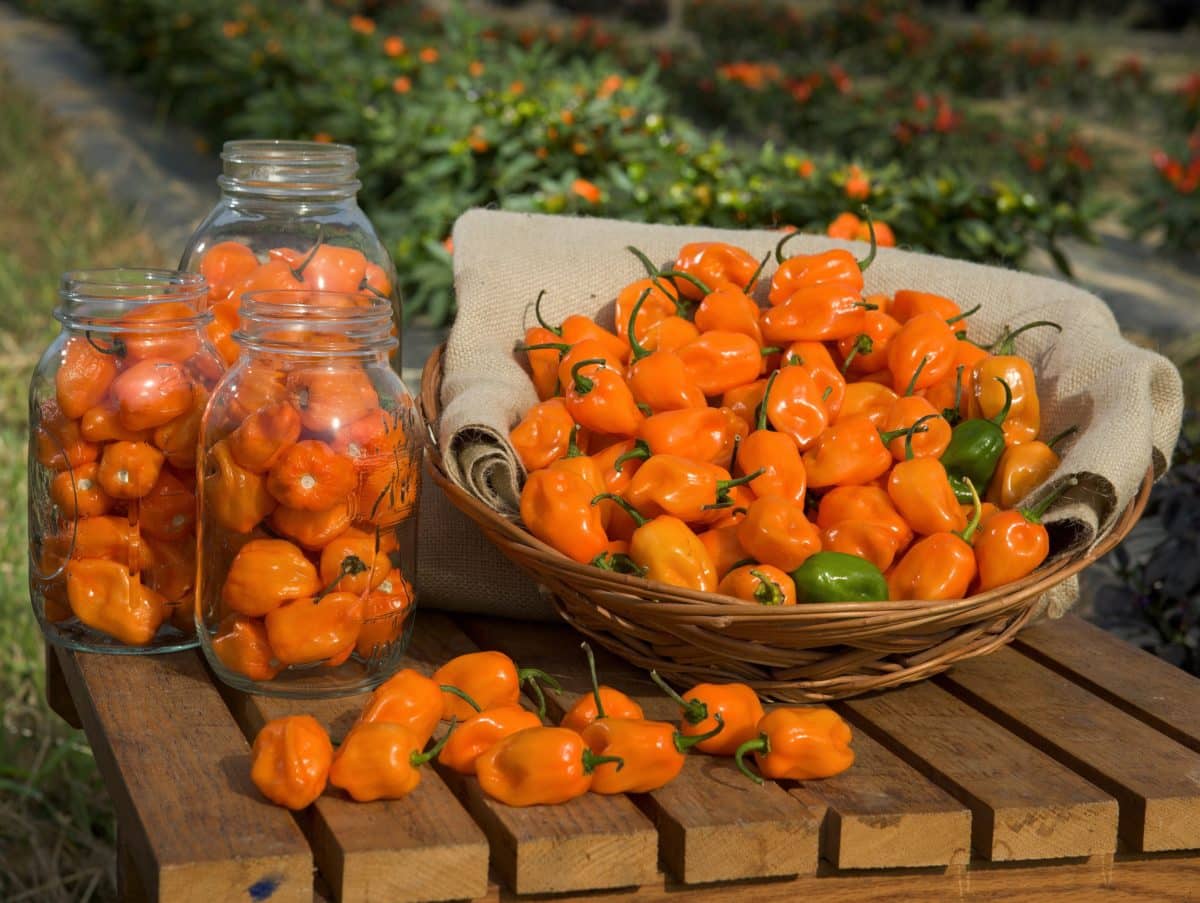Hot sauces and pepper-based condiments are found in nearly every cuisine around the world. While they have been in use for centuries, it is in the last decade that the popularity of hot sauces has exploded. In the United States, where hot sauces are a $1.3 billion market, much of the popularity has revolved around finding the hottest pepper and creating the hottest sauce.
Many of the hotter sauces that find their way to market are based on the habanero and related varieties. The habanero is sought after for its unique flavor profile and blistering heat. Habaneros have a fruity, somewhat floral, flavor and aroma which are nearly impossible to reproduce. At one time, the habanero was recognized as the world’s hottest pepper. Habaneros measure from 100,000 to about 350,000 on the Scoville Heat Unit (SHU) scale. By comparison, the jalapeno usually measures 2500-8,000 SHU. The heat of the peppers comes from capsaicin and the value of SHU is a representation of the capsaicin levels in the pepper. This level varies from pod to pod and is highest in the veins and seeds of the pod.
In recent years other pepper varieties have surpassed the habanero and there continues to be an active community striving to create the next variety to compete for the title of hottest chili in the world. Recent champions have all been from the same pepper species as the habanero, Capsicum chinense. These peppers have colorful names such as 7 Pot, Naga Viper, and the Trinidad Moruga Scorpion.
The current world record holder for the title of hottest pepper is Smokin’ Ed’s Carolina Reaper, which has recorded a heat rating of 2.2 million Scoville units – which makes it some 440 times hotter than a jalapeno!
With the popularity of these peppers and the tendency for commercial sauces based on them to be ridiculously hot, how can you enjoy the fruity, citrusy flavor profile of the habanero family without requiring prompt medical attention? Fortunately there is a way.

While the C. chinense species is the source of the world’s hottest peppers, there are also a few varieties in this group that do not have anywhere near the heat levels of the standard habanero. In fact, a few varieties have almost no heat. Aji Dulce varieties and several of the seasoning and perfume peppers have a flavor and aroma profile like a habanero, but without the high heat. A few other varieties have slight heat, but significantly less than a jalapeno.
The challenge is in finding these peppers. The easiest way to secure a supply of mild habanero-type peppers is to grow your own. In some locations, plants may be available for sale in specialty nurseries or through mail order. In other areas, it is usually possible to locate a source for seeds to grow your own. Once you have successfully found or grown your peppers, you can save seeds from a few pods and grow more from seed the next season.
Growing these peppers is the same as growing almost any of the chili type of peppers. The plants enjoy a warm and somewhat humid environment. A challenge for growers in the more northerly climates is that most of these varieties need a long growing season to produce ripe pods. A few varieties will have crops in the 90-100 day time frame, but most need 100 to as many as 120 days to produce a fully-ripe harvest. In New England, one successful method is to grow the plants in large dark colored pots. These pots help the soil to warm faster in the spring, and they can be moved indoors temporarily in case there is a threat of damaging cold. This method should allow for successful harvests, including of the extremely late season varieties.
If you decide to grow your own from seed you buy or save yourself, it is always a good idea to sample a small portion of a pepper before committing to a larger amount. Peppers hybridize freely with other peppers of the same species and produce viable seed. Peppers can also hybridize with peppers in other species groups, but viability of the seed produced varies for each species paring.
If you are growing C. chinense peppers of varying heat levels, the probability of hybridization can be high, and the results will be unpredictable. While the first generation cross should show the primary characteristics of the two parent plants, subsequent progeny will vary. Imagine your surprise when the supposedly mild pods turn out to be eye-wateringly hot! The Carolina Reaper was produced using a Red Habanero crossed with a variety of Ghost pepper. The Reaper is significantly hotter than either parent.
Good practice is to always test a small sample the first time you harvest pods from a new plant. Cut the pepper in half, slice a small section away from the ribs or seeds and taste. If the pepper shows no sign of excessive heat, move on to a larger sample with a small portion of the rib or a few seeds attached. If all is still as expected, congratulations, you can now experiment with all the great flavor profiles you can create with a habanero, but with the ability to customize the heat levels to your own taste. To make the dish or sauce hotter, simply add in some traditional habanero to create whatever heat level is desired.
One way to add the habanero flavor profile to many types of dishes is to make a sauce with your mild C. chinense pods. I have included a basic recipe for a mild habanero sauce, but it can be customized as desired. One tasty variation combines a sweet fruit element and just a touch of heat to create a great sweet-hot balance that can also be used as a glaze when combined with preserves. ![]()
